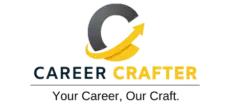Attention, mid to senior level managers! Are you struggling to stand out in the competitive job market? Does your resume resemble a bad resume, failing to capture the attention of employers? Fear not, for we have the solution you’ve been searching for. In this comprehensive guide, we will walk you through the step-by-step process of crafting a non-boring resume that will make you irresistible to potential employers.
Identifying the Problem
1. Boring Resumes:
Many job seekers fall into the trap of creating generic, uninspiring resumes that fail to make an impact. As a result, their applications end up in the “discard” pile. Additionally, using flowery language can make a resume seem pretentious and obscure actual qualifications.
2. Lack of Differentiation:
Without a unique selling proposition, your resume blends in with countless others, making it difficult for employers to remember you. You need to find ways to stand out and make a lasting impression.
3. Overwhelming Content:
Resumes filled with excessive information can be overwhelming and tedious for hiring managers to read. Instead, you need to prioritize and highlight the most relevant and impactful information.
4. Lack of Visual Appeal:
A visually unappealing resume can give off the impression of a lack of creativity and attention to detail. You need to find the right balance between visual elements and professionalism to create an aesthetically pleasing resume.
5. Failing to Highlight Achievements:
Neglecting to showcase your accomplishments and results can make your resume seem bland and unimpressive. You need to demonstrate your value by highlighting your past successes and quantifying them whenever possible. Demonstrating just what you have achieved can make your resume more compelling. “Your resume is your first impression, make it memorable and unique.”
Common Resume Mistakes to Avoid
Solutions
1. Craft a Compelling Summary:
Grab the reader’s attention from the start by writing a captivating summary that highlights your unique value proposition and core skills. As a job seeker, presenting your contact information creatively can help you stand out in a competitive job market. This section should provide a brief overview of your background, expertise, and the value you can bring to the organization. It acts as a “hook” to entice the employer to read further into your resume. Link: [The Ultimate Guide to Explaining Employment Gaps in Your Resume]
2. Tailor Your Content:
One-size-fits-all resumes won’t cut it in today’s competitive job market. Take the time to customize your resume for each job application. Research the company, understand the job requirements, and align your skills and experiences with what they are looking for. Avoid generic buzzwords and focus on showcasing your relevant achievements that demonstrate your qualifications and fit for the role.
3. Streamline Information:
In a sea of resumes, it’s crucial to make yours easy to read and understand. Organize your resume into clear sections such as “Summary,” “Work Experience,” “Education,” and “Skills.” Use bullet points and concise sentences to convey information effectively. Emphasize the most relevant details and provide sufficient context without overwhelming the reader. Remember, hiring managers often spend limited time reviewing each resume, so make it easy for them to find the key information they need.
“In a sea of resumes, be the one that stands out and grabs the attention of employers.”
4. Embrace Visual Elements:
While content is king, visual appeal can make your resume visually stand out. Incorporate visual elements like color schemes, fonts, and spacing to create an aesthetically pleasing and visually appealing resume. However, ensure that the design remains professional and aligned with the industry. Use formatting techniques such as bolding, italics, and headings to highlight important information and guide the reader’s attention. A well-designed resume can leave a positive and lasting impression.
5. Highlight Achievements:
Your resume should be more than a list of job responsibilities. It should showcase your accomplishments and the impact you have made in your previous roles. Instead of simply listing your job duties, focus on your achievements and the results you have achieved. Quantify your accomplishments whenever possible by including specific numbers, percentages, or other measurable metrics. This helps to provide context and demonstrate the value you can bring to a new employer. For example:
“Your resume should be a reflection of your personality, skills, and passion for what you do”
– Instead of saying, “Managed a team of sales representatives,” you could say, “Led a team of 10 sales representatives, resulting in a 20% increase in revenue within six months.”
– Instead of stating, “Responsible for project management,” you could say, “Successfully completed multiple projects ahead of schedule and under budget, resulting in a 15% cost savings for the company.”
By highlighting your achievements, you showcase your ability to deliver tangible results and provide evidence of your skills and capabilities.
The Importance of Soft Skills in Your Job Search
In today’s job market, soft skills are just as crucial as technical skills. Here’s why they matter and how you can showcase them effectively:
Essential for Success: Soft skills like communication, teamwork, and problem-solving are essential for success in most jobs. They enable you to work well with others and adapt to various situations.
Valued by Hiring Managers: Hiring managers often prioritize candidates with strong soft skills because they are seen as more adaptable and valuable employees. These skills can set you apart from other job seekers.
Show, Don’t Tell: Instead of just listing soft skills on your resume, demonstrate them through specific examples and stories. Highlight situations where you successfully used these skills to achieve positive outcomes.
Career Advancement: Developing strong soft skills can increase your chances of getting hired and advancing in your career. They are often more important than technical skills, as they are harder to teach and more valuable in the long run.
Cultural Fit: Candidates with strong soft skills are often seen as more attractive to hiring managers because they are more likely to fit in with the company culture. This can lead to better job satisfaction and retention.
Practice and Experience: Soft skills can be developed through practice and experience. Volunteer work, extracurricular activities, and other non-work experiences can be great ways to build and demonstrate these skills.
Behavioral Interviews: Hiring managers often use behavioral interviews to assess a candidate’s soft skills. Be prepared to provide specific examples that showcase your abilities in areas like leadership, teamwork, and communication.
Building Relationships: Soft skills are essential for building strong relationships with colleagues, clients, and customers. They help you navigate workplace dynamics and contribute to a positive work environment.
Job Satisfaction: Developing strong soft skills can lead to increased job satisfaction and career advancement. They enable you to handle challenges effectively and contribute to a more fulfilling work experience.
What Hiring Managers Look for in a Resume
Understanding what hiring managers look for in a resume can help you tailor yours to meet their expectations. Here are some key elements they focus on:
Relevant Work Experience: Hiring managers often look for candidates with work experience and skills that match the job description. Highlight your most relevant experiences to show you’re a good fit for the role.
Clear Summary Statement: A clear and concise summary statement can help hiring managers quickly understand your qualifications and experience. This section should provide a snapshot of your professional background and what you bring to the table.
Keywords from the Job Description: Including relevant keywords from the job description can help applicant tracking systems (ATS) match your resume with the job. Make sure to incorporate these keywords naturally throughout your resume.
Action Verbs: Using action verbs like “managed,” “created,” and “led” can help describe your skills and experiences in a clear and concise way. They make your accomplishments stand out and show your proactive approach.
Quantified Achievements: Quantifying your skills and achievements with numbers and metrics provides a clear picture of your experience and abilities. This helps hiring managers assess your impact and potential value to their organization.
Well-Formatted Resume: A well-formatted resume with clear headings and bullet points makes it easy for hiring managers to scan and understand. Use a clean, professional layout to ensure your resume is visually appealing and easy to read.
Relevant Education and Certifications: For certain jobs, relevant education and certifications are essential. Make sure to highlight these qualifications prominently on your resume.
Track Record of Success: Hiring managers often look for candidates with a strong track record of achievement and success. Highlight your accomplishments and the positive outcomes you’ve achieved in your previous roles.
Professional Online Presence: In today’s digital age, a professional online presence, such as a LinkedIn profile, can be essential for job seekers. Ensure your online profiles are up-to-date and reflect your professional brand.
Well-Written Cover Letter: A well-written cover letter can help hiring managers understand your qualifications and experience in more detail. It’s an opportunity to explain why you’re interested in the job and how you can contribute to the organization.
Real-Life Examples
To further illustrate the impact of implementing these strategies, let’s look at five real-life examples of professionals who transformed their resumes and achieved success:
1. John, a senior marketing manager, transformed his resume by incorporating a visually appealing infographic-style layout. This unique design caught the attention of recruiters and led to multiple interview requests. Employers were impressed by his ability to communicate complex information in a visually engaging manner, showcasing his creativity and attention to detail.
2. Sarah, a project manager, revamped her resume by focusing on her achievements. She quantified her accomplishments by showcasing how she successfully completed projects ahead of schedule and under budget, leading to a promotion. Her results-oriented approach demonstrated her ability to drive successful project outcomes and caught the attention of hiring managers.
3. Michael, an IT professional, revamped his resume by using a clean and well-organized format. He highlighted his technical skills and certifications, which helped him land a highly sought-after position at a leading technology company. His resume’s clarity and emphasis on relevant technical expertise made it easy for employers to see his qualifications and understand his value.
4. Emily, a sales executive, differentiated herself by incorporating a video introduction into her resume. This creative approach showcased her confidence and communication skills, leaving a lasting impression on employers. By combining traditional resume elements with a personal touch, she stood out from the competition and received positive feedback from recruiters.
5. David, a finance manager, transformed his resume by incorporating eye-catching graphs and charts to visualize his financial accomplishments. This visual representation made his achievements more compelling and memorable to hiring managers. The visual elements helped to highlight his ability to drive financial growth and make data-driven decisions.
Conclusion
Crafting a non-boring resume is essential for mid to senior level managers who want to land their dream job. By implementing the strategies outlined in this guide, you can create a resume that captures attention, showcases your achievements, and sets you apart from other applicants. Remember, your resume is your opportunity to make a strong first impression, so make it count.
If you need further assistance in crafting a standout resume or optimizing your LinkedIn profile, we invite you to check out What we Offer. Our resume writing and LinkedIn optimization services are designed to help you maximize your chances of success in the job market. Take the first step towards a non-boring resume and unlock new career opportunities today.

